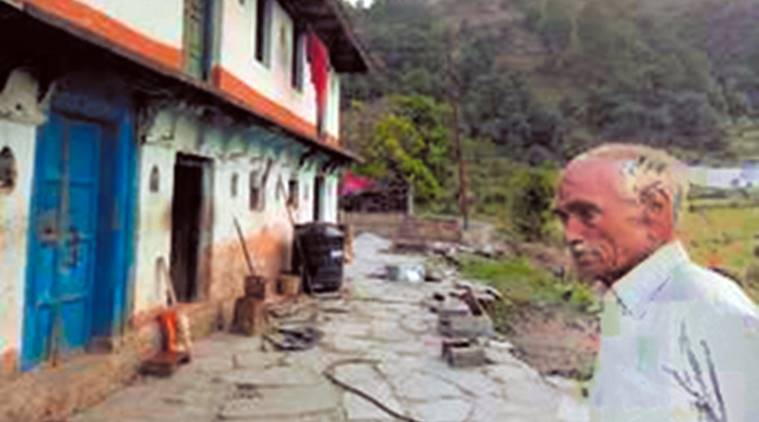 Gyananand Saklani outside his house in Kagdi village. Express
Gyananand Saklani outside his house in Kagdi village. Express
As migrants return home driven by the coronavirus fear and the after-effects of a nationwide lockdown, Uttarakhand’s ‘ghost villages’ are symptomatic of what forced them out in the first place.
Officials say that as per their records, not one of the more than two lakh residents of the state who have registered to come back have opted for its 1,700-odd “nirjan” villages, areas without road connectivity or opportunities, which now house just one-two families.
Over the past one decade, 73,072 people have migrated from Pauri Garhwal district, the maximum for the state. The district has seen over 20,000 return since the lockdown began. “We have no information of any person returning to ghost villages. Almost all have come to those villages which they used to visit periodically,” said Mohammad Mustafa Khan, District Panchayati Raj Officer.
The state government has directed the district panchayati raj offices to contact each returnee. Till last week, of the 13,703 contacted in Pauri Garhwal, a quarter (3,619) said they would leave again after the lockdown was lifted. Khan said 6,440 (46%) are confused, 818 want to do farming, 713 are hoping for work under the MNREGS, 320 for any private job, 224 to work in hotels, 160 to start own business, 123 in animal husbandry, 118 have said they can work as labourers, 17 hope to be employed as drivers, 11 in fisheries, while eight want to work as priests. “Details of everyone have been forwarded to the departments concerned so that help can be provided,” Khan said.
Listing the initiatives to encourage migrants to return, Chief Development Officer Himanshu Khurana said they are developing clusters of 10-12 villages, including the nirjan villages. “In Pauri, an ajeevika (livelihood) cell has been created at the district level where people can contact about the field they are interested to work in,” he said.
Uttarakhand’s Rural Development and Migration Commission Vice-Chairman Sharad Singh Negi said those who are returning are semi-permanent migrants. “Permanent migrants have no family members or facilities left here,” Negi said.
As per the Migration Commission he heads, set up by the state in 2017 to study the outward flow and offer suggestions to tackle it, semi-permanent migrants from Uttarakhand (over 3.38 lakh) outnumber permanent ones (1.25 lakh) by three times.
Gauli in Khirsu block is one such “nirjan” village. Locals said five Brahmin families that left several years ago were the last to migrate from here. Nearby Kagdi village had only one resident, 79-year-old Gyananand Saklani, till six months ago, when neighbour Prabhat Ghildiyal (62) moved back with mother Prabha Devi (85), to renovate their 150-year-old ancestral home.
Ghildiyal, who has a resort in Mal Devta in Dehradun, said he is waiting only for lockdown to lift to leave. A commerce graduate, Ghildiyal migrated 30 years back to Delhi, but is now settled in Dehradun.
Prabha Devi, who last lived in the village with husband Harsh Pati 50 years back, said they visit every year, but for a few days. “If this home is maintained, I hope my grandchildren will return.” She is getting toilets with English commodes and tiles built, in what she admits is, a “faint” hope.
Kuldeep Batola, the husband of Gajheli gram panchayat pradhan, said it is not surprising that maximum migration from this panchayat happened from Gauli and Kagdi villages, with their lack of roads, and schools. However, he added, “The kuchcha approach road built recently from Ganwada will be made pucca soon. A road is also being built under the MNREGS from the village to the nearest school.”